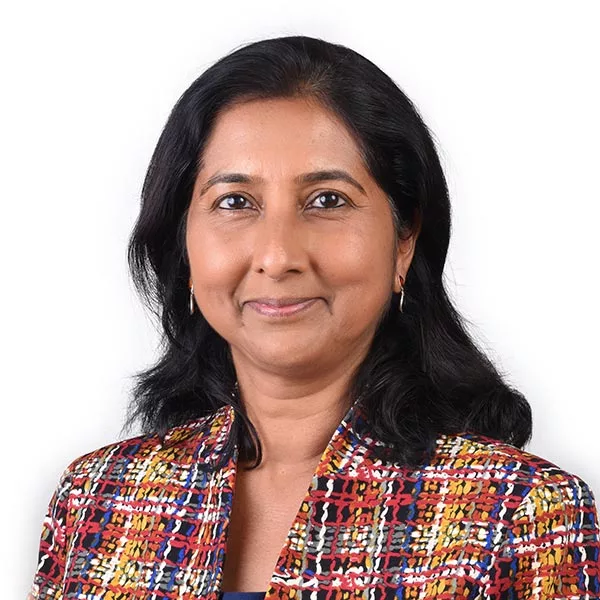Programs
Courses Taught
MATH 108 Finite MathematicsMATH 109 Foundations of Mathematics
MATH 110 Introduction to Statistics
MATH 123 Pre-Calculus
MATH 210 Statistical Inference
MATH 299H HON:Math Across Cultures: Ethnomath
MATH 225 Calculus & Analytic Geometry II
MATH 301 Linear Algebra
MATH 315 Mathematical Probability & Statistics
MATH 325 Multi-Variable Calculus
MATH 331 Intro to Abstract Mathematics
MATH 403 Abstract Algebra I
MATH 431 Real Analysis I
MATH 435 Geometry
MATH 499 Senior Seminar in Mathematics
Education
- B.S., Mathematics, University of Madras, India
- M.S., Mathematics, University of Delhi, India
- Ph.D., Mathematics, George Washington University
Interests
- Dynamical Systems
- Math Education
- Ethnomathematics
Awards
- 2013 Office of the State Superintendent of Education’s Teacher Quality Improvement Grant for “Mastering Mathematics with Modeling M3 Project”, Trinity Washington University and Maya Angelou Public Charter School Partnership
- 2009 Alumnae Association Faculty Grant for “Math Across the Curriculum Project”, Trinity Washington University
Select Works Published
- Bicubic B-Spline Surface Approximation of Invariant Tori
Gilsinn, D. and Ramamurti, S., NISTIR , Vol. 7731, 2010 - Modeling Time Delay Effects for Machine Tool Chatter Control
Gilsinn, D. and Ramamurti, S., MCSD Yearly Report, 2007
Philosophy
Three guiding principles at the heart of my teaching philosophy are a genuine commitment to active student learning, a passion infused with enthusiasm for imparting mathematical knowledge and an effective pedagogy through clear communication in the classroom. Consistent with Trinity’s core mission statement of “commitment to the Education of Women in a particular way through the design and pedagogy of the historic undergraduate women’s college, and by advancing principles of equity, justice and honor in the education of women and men in all other programs,” I place student success in learning at the forefront of my teaching goals. I use a two-fold strategy for achieving this in my classroom: a teaching style that is effective and an appropriate assessment process that gauges this effectiveness. Although my classroom instruction methodology has evolved over the years, based on the needs of my students, my teaching objectives have essentially remained the same:
--to maintain a level of seriousness and purpose in every course that I teach, no matter how basic the course may be,
--to teach the material in an organized and clear manner,
--to infectiously spread my own enthusiasm for the subject matter,
--to encourage students to participate in class discussions,
--to encourage students to write mathematical sentences in a clear and meaningful way,
--to get students interested in trying out different approaches to solve a problem,
--to invite and encourage students’ comments on my teaching style,
--to monitor each student’s progress in the course through my feedback on homework, quizzes and tests, and
--to constantly look for ways to improve my teaching pedagogy.

